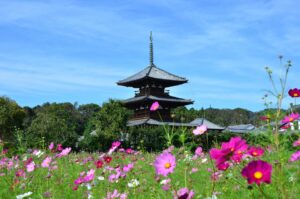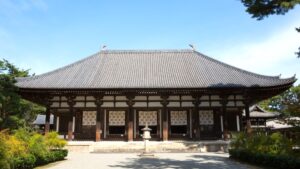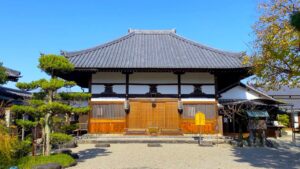Kyoto Imperial Palace, Successive Emperor's Residence
The Heian-kyo had been the center of the nation where the successive emperors resided for over 1200 years since the capital relocation from Nara in 794 by the 50th Emperor Kanmu until 1869 when Emperor Meiji moved to Tokyo, one year after the Meiji Restoration. The highlight is the beautiful Shishinden Hall with its cypress […]
Why was the world's oldest wooden Horyuji Temple built by Prince Shotoku?
Horyuji Temple, a World Heritage Site, is the oldest wooden structure in the world and one of the "Buddhist Monuments in the Horyuji area”, that has retained its beauty unchanged for almost 1,400 years. It consists of 48 buildings, including the Kondo (Main Hall), the Five-story Pagoda, the Middle Gate, and the East and West […]
Toshodaiji Temple, Ganjin brought precepts to Japan after five failed journeys
Toshodaiji Temple, a UNESCO World Heritage Site, was founded by Ganjin or Jianzhen (668-763, 鑑真) in 759 as a center for Buddhist training when Asuka(now Nara) was Japan’s capital. In 733, during the region of the 45th Emperor Shomu (701-756, 聖武天皇), two young Japanese monks named Yoei and Fusho embarked on a mission to the […]
Asukadera, the first full-scale Buddhist Temple in Japan
Asukadera Temple (飛鳥寺) was the first full-scale Buddhist temple in Japan, spending approximately 200m from east to west and 300m from north to south. It was built in the capital province of Asuka in 596, using various advanced technologies in architecture, geology, and painting. In the face of the threat of falling into the tributary […]




